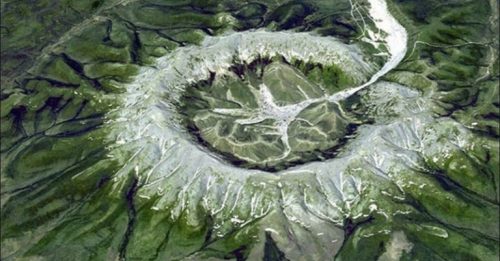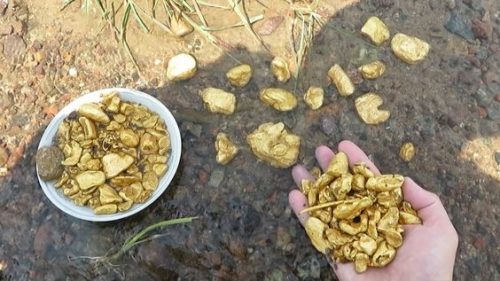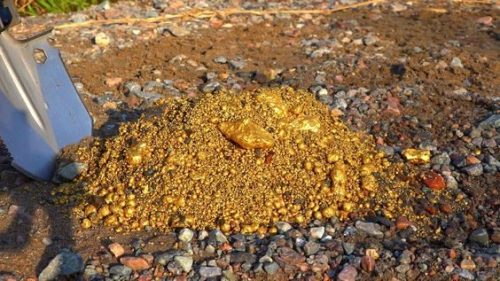
The allure of gold has captivated human civilization for millennia. Its shimmering beauty and intrinsic value have made it a symbol of wealth and power. But what if we could travel back in time and explore the origins of gold, uncovering the ancient reserves that shaped our world? In the heart of Earth’s distant past, we find a treasure trove – Treasure Mountain’s ancient gold reserves.
The Enigmatic Treasure Mountain
Treasure Mountain, also known as “Xuebaoding,” is a majestic peak located in the heart of China’s Sichuan province. But it’s not just the breathtaking views that make this mountain a true treasure. For centuries, it has been known for something else – its vast, ancient gold reserves.
The story of Treasure Mountain’s gold begins more than 2.5 billion years ago during the Archean Eon. At this time, the Earth was a very different place. It was dominated by volcanic activity, and the atmosphere was almost devoid of oxygen. In this primeval world, gold began to form.
The Geological Ballet of Gold Formation
Gold, a chemical element with the symbol Au (from the Latin “aurum”), is a rare metal. Its rarity is not only because of its value but also due to the unique geological processes required for its formation. Gold is primarily found in hydrothermal quartz veins, formed when superheated water containing minerals like silica and gold comes into contact with cooler rocks.
In the case of Treasure Mountain, the gold was deposited in the veins that crisscrossed the mountain as a result of volcanic activity. Over time, the veins became rich with gold, creating a hidden treasure that would remain undisturbed for eons.

The Mystery of Ancient Gold Accumulation
But how did the gold reserves accumulate over billions of years? The answer lies in the slow and relentless forces of nature. As tectonic plates moved, Treasure Mountain’s veins of gold were buried deeper beneath the Earth’s surface. The immense heat and pressure that accompanied these geological movements caused the gold to crystallize, turning it into the magnificent, shining metal we prize today.
These geological processes, acting over millions of years, transformed Treasure Mountain into a gold vault. But the ancient gold wasn’t just lying exposed for us to discover; it remained hidden deep within the Earth’s crust.
Modern-Day Gold Mining
The exploration of Treasure Mountain’s ancient gold reserves is a testament to the resilience of the mining industry. It took advanced geological knowledge, sophisticated technology, and a deep understanding of Earth’s history to locate and extract this precious metal.
Modern mining operations require a combination of traditional and cutting-edge techniques. Miners use drilling and blasting to access the gold-bearing quartz veins, but they also employ eco-friendly practices to minimize environmental impact. This duality is crucial for the responsible extraction of this finite resource.
Gold’s Profound Impact on Humanity
The history of gold is intertwined with the history of human civilization. Gold has been used as a form of currency, a symbol of wealth, and a decorative element in jewelry and art for thousands of years. It played a pivotal role in shaping the economies and cultures of societies around the world.

Gold rushes, such as the California Gold Rush of the 19th century, led to the rapid expansion of territories and the rise of new cities. The gold standard, a monetary system where the value of a country’s currency was directly linked to a specific quantity of gold, was adopted by numerous nations. Today, central banks and governments still hold gold reserves as a safeguard against economic instability.
Environmental and Ethical Concerns
While the pursuit of gold has left an indelible mark on history, it has not been without its drawbacks. Gold mining can have significant environmental and ethical implications. Deforestation, habitat destruction, and water pollution are some of the environmental challenges associated with gold mining. Additionally, the use of toxic chemicals, such as cyanide, in the extraction process has raised ethical concerns.
Efforts are being made to address these issues through responsible mining practices, increased transparency, and the use of alternative, less harmful extraction methods.
Treasure Mountain’s ancient gold reserves provide us with a captivating glimpse into the Earth’s distant past. The geological ballet of gold formation and the slow, patient accumulation of this precious metal over billions of years stand as a testament to the remarkable processes that shape our planet.
While gold has played a significant role in human history, it’s important to approach its extraction with environmental and ethical considerations in mind. Responsible mining practices are essential to ensure that future generations can continue to admire the beauty and value of this timeless treasure.
As we explore the riches of Treasure Mountain, we are reminded of the intricate dance of nature and the enduring allure of gold, connecting us to the distant past and the ever-evolving future.






